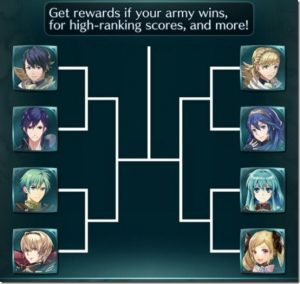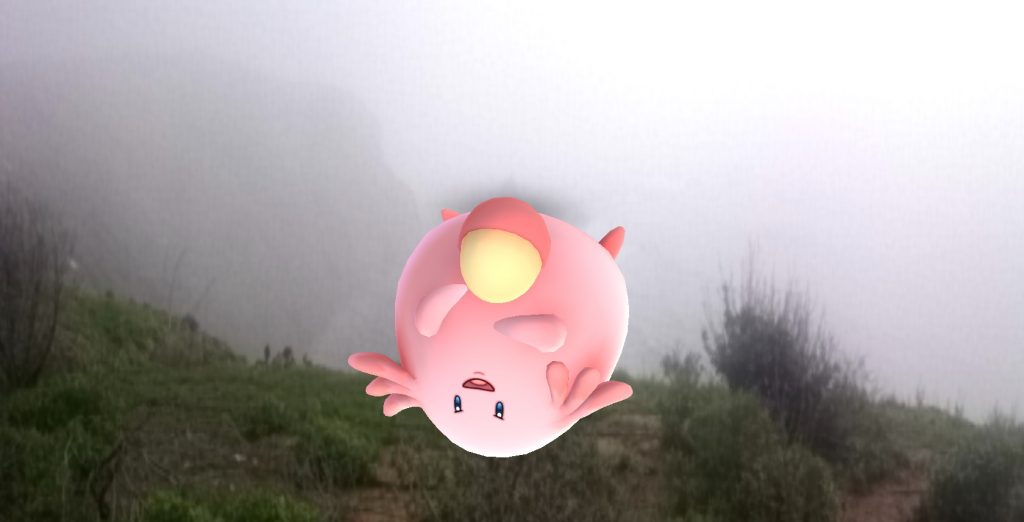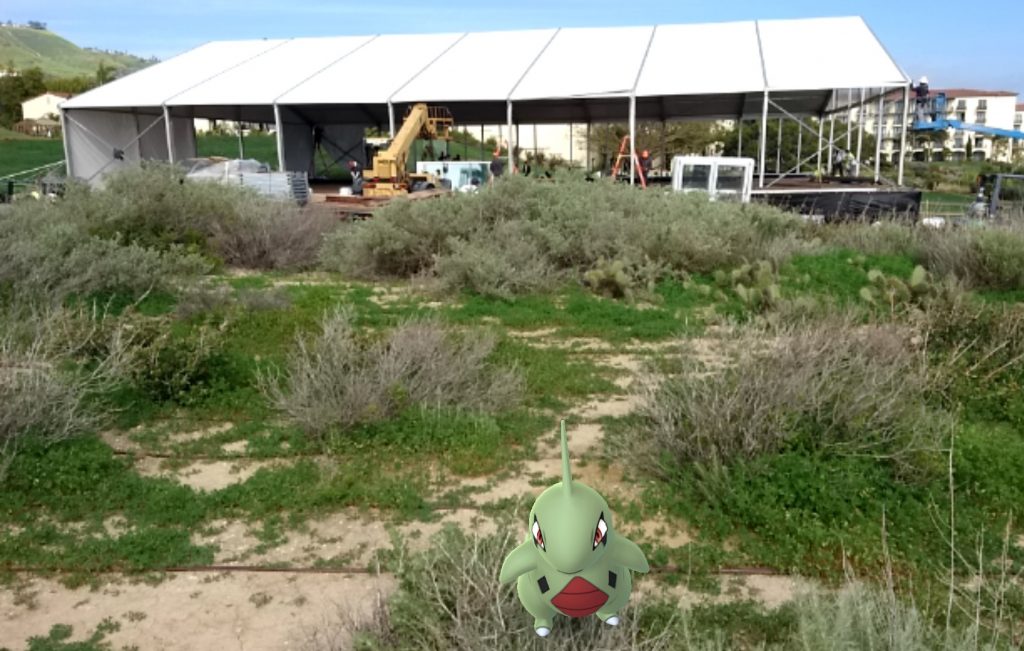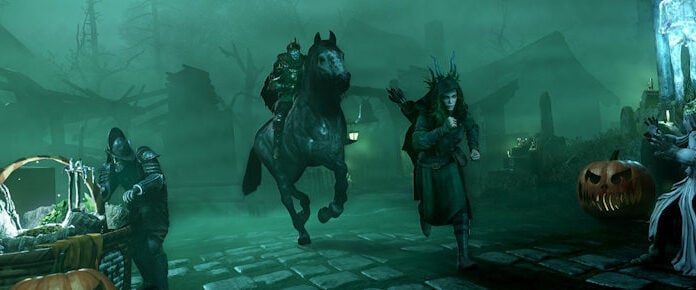
I’ve been a bit frustrated with Niantic lately. I love some of its ideas, but I watched someone else play Ingress prior to Pokemon GO’s release, and I noticed very similar problems between the two games after release — problems that the company should have noticed and corrected in its followup.
Recently I decided to try out the former. Both are totally unintuitive. You have to search the UI for the tutorials, though Ingress’ can be accessed only near objectives. You’re asked to join a faction sooner there than in PoGO and with no context beyond 2-3 sentences. The game throws jargon with little to no context at you throughout the tutorial, making it difficult to follow. I walked around, clicking things and used items that I don’t fully understand, not because I’m too lazy to read but because I wanted to understand a game without consulting google. I saw portals get taken without anyone around me as I stood by an objective near a government-restricted area where standing still longer than it takes to read “No Trespassing” could trigger security. I couldn’t get into it, not just because it was simple but because it was poorly designed.
I am guessing this is what it felt like for PoGO players who didn’t know anything about the main series. While PoGO has the advantage of an IP and larger playerbase, Ingress doesn’t. Its chat feature should make this easier, but it’s dead aside from spammers. There is no way to report another player, just blocking. The game is PvP-oriented, so I’m not sure what to do when I meet someone from the other team. Niantic clearly hasn’t listened to Raph Koster’s talks about what VR and AR can learn from MMOs (and MUDs). While it’s far from the only company with this issue, it’s one of the better known ones, and it’s carrying someone else’s mega-IP along for the ride.
Tech demos aren’t games
If it’s not obvious yet, I’m MassivelyOP’s resident Nintendo fanboy. It may not always seem that way, as I’m very critical of the company’s secretive and controlling nature, but as an adult, I find many of its games more innovative and imaginative than a lot of its competitors.
That being said, I’m sorely disappointed with the state of Pokemon GO in Niantic’s hands, especially since the only reason I’ve upgraded my phone beyond simply being capable of email is because of Nintendo’s mobile push. I’ve played Miitomo and now Fire Emblem Heroes much more than I thought I would, and I’m admittedly waiting for Super Mario Run on Android. While none of these games is using cool geo-caching tech, and Miitomo might not even be a true game, they are highly engaging apps. They’re constantly updating, they have friends lists, Miitomo allows for free-from communication (including very adult language), and they don’t call themselves MMOs. Niantic’s free to use the term, even if I disagree with it. Heck, I’ve seen people jokingly call Tinder an MMO, though perhaps socialization simulator would be a better description.
What we have in Pokemon GO feels like an extended tech demo at the moment. No, it’s not using placeholder art, and it has music, but the core itself feels unfinished, like something to be presented to investors to show that the idea works but needs refinement. It takes a single (problematic) feature — geo-caching — but doesn’t address very basic issues plaguing Ingress (and I’m not just talking about spoofing). It then combines it with a simple battle system and finger-flicking throw simulator that never gets deeper than what you experienced from the start of the game. I’d call it an alpha if I were hard pressed, but the basic design aspects are still amateurishly sloppy.
The lack of a growing challenge combined with a shallow learning curve makes for more than just boring play; it also downright drives players away. It’s the antithesis of a fully developed game. Casual collector types may stick around, but it feels like, aside from those types, most people playing these days are IP fans. The exercise enthusiasts, hardcore collectors, and gym leaders who experienced PoGO as their entry into the world of Pokemon have largely disappeared from my local scene, and that’s not just a shame for me but for other suburban/rural players like me in similar situations. It feels downright wrong to need to drive to a city to play an outdoor video game.
There are hints at some interesting battle ideas, but it’s all hidden, and worse, counter-intuitive, a flaw I’m only willing to forgive in actual tech demos and alpha/betas. It’s 2017, developers — where is your tutorial? Why is are your system automatically suggesting I use Pokemon that have both type weaknesses to my opponents and give me less experience for my wins?
While there is an AR overlay with picture snapping option (again) hinting at something cool, it slays batteries and lacks in-app tools for sharing, which also reeks of partially baked game design.
The combat is fairly basic and changes nearly every month in ways that, without the Pokemon IP, would have been cause enough for people to drop the game. Catching is so boring and repetitive that the most ideal way to play the game is with a device that catches things for you. In fact, off the top of my head, two times (at least) Niantic employees have mentioned wanting peripherals to “enhance” the game and that the Plus helps make the game more “complete.” Again looking to Koster, I can see clearly that there are basic design issues at play.
Think about risk vs. reward in terms of an MMO fight — and I don’t just mean this in terms of items but in terms of fun. Killing 10 rats is easy and rarely fun. They tend to have low HP and low attack. There’s a clear win/lose situation revolving around health, even if it’s seen visually through the poor rodent bleeding rather than having a low red health bar.
We don’t have that in PoGO. The main series limits you to Pokemon and their moves as measurable resources, which can faint and cause you to lose. The enemy Pokemon you’re trying to catch can run away, but they are very few and far between. The player is dealing with limited resources they can see or sense: how fast each Pokemon loses health, the number of balls they’re carrying, and the number of Pokemon at their disposal. PoGO hides all this. A critter can run after the first ball or the hundredth. While it may be kind of fun at first, the fact that the player can’t become measurably better at it.
Putting it another way, it would be like fighting trolls that constantly have different stats. You can’t see your health or the troll’s. While you may never die, the troll can simply vanish for no apparent reason. A weak troll may not die in a single hit, while a strong one might. A weak troll might drop amazing treasure if you’re willing to invest a lot of gold in it, while a high-level troll might drop nothing. It may be realistic, but it’s rarely fun.
Maybe the problem is that Niantic, like Nintendo, gets caught up in its tech. I’m one of the people who absolutely hates almost everything about Star Fox Zero on the Wii U, a game that used such gimmicky controls that both professionals and casuals just dropped their controllers and walked away. I’m not a professional game designer, but teachers need to make games. They’re called “lesson plans,” and no, they’re not always fun, but when we do them right, there’s progress. Good games should teach you to game better, not mislead you. Niantic’s tech is totally unrelated to its game design problem, but it stands out because it’s so minimal.
Geo-caching is cool, as is AR, but why is Niantic CEO John Hanke (reportedly level 19) suggesting we need special glasses to make it “more real”? We already know products get shipped half complete anyway, so why not focus more on play that actually makes use of location and the AR camera? Why not have players generating unique, time sensitive QR codes for some kind of lure to attract/share a specific Pokemon so they can play in a safe place? It’s one thing to repeat other people’s mistakes, but repeating your own is problematic.
I understand that someone has to push tech, but with a family friendly IP leading to theft and death, you would think one of the companies involved in PoGO would have pushed for more safety. At least the company’s careful about advertising to minors, so I’ll give it that.
But the game launched without most of its advertised features. Spoofers slowing down trade issues only goes to show that Niantic’s current design is severely flawed. Basic gameplay features are still in flux (including basic gameplay like how to throw the Pokeball, which possibly was reverted recently after players had spent over a month getting used to the new way). Change is fine, but launch features should be seeing these mechanics built up at this point, not constantly restructured while we wait for “fun.”
This is why PoGO feels like a tech demo.
Content woes
Nintendo sells its games at a set price and walks away. Yes, it is starting to do DLC, and the amiibo toys act as a kind of cash-cow delivery system for some aspects of it, but compared to the amount of quality games it makes vs. its poor games/support, I think we all let that slide.
Niantic, on the other hand, has only two games, and while they both have hardcore fans among the playerbase (including me!), it’s difficult to argue that the games themselves are well-designed. While I may be playing the game still, it’s for two significant reasons: I love Pokemon and I need something to motivate me to leave the house (not everyone enjoys working at home). Like Nintendo, Niantic is in a new gaming territory (what other gaming genre sees sales drop in winter?) and updating its titles constantly, trying to win players over with continued efforts to improve its games, and I applaud that.
My concern, however, is how long we have to wait for design improvements when Niantic’s repeated very basic mistakes since Ingress, including the fact that spoofers essentially invalidate basic geo-location gameplay before taking competitive play into account. What’s worse is that anyone familiar with Nintendo’s other mobile games will see that the company has experimented with its own IPs (with help from DeNA), not so much at launch but through updates, in ways that I’d hope Niantic would have followed up on or Nintendo would have requested. Instead, Niantic largely adds new skins or breaks core systems in ways that feel hamfisted.
Here are some of the features other Nintendo mobile apps have added since launch that Pokemon GO still lacks:
Chat. Miitomo, another of Nintendo’s attempts to do a social network that’s also family friendly released March 2016, allows free-form text input. However, it updated to allow not just private messages among friends but chatting with the whole player base via Answer Central.
Reporting other players in-app. Yet another Miitomo feature. PoGO‘s current system requires you to leave the app and open a web browser. It’s clumsy and requires multiple steps. A steamlined system, like “Suspicious Gym Activity,” could help Niantic quickly identify multiple locations and check internal time stamps on gym events if Niantic keeps track of such things. It’d also make it possible for chat to occur.
Social media integration. Again, from Miitomo, you can easily share pictures not only within the app itself but on Twitter, Instagram, or whatever other platform you like. It’s a small addition, but considering how popular Pokemon Snap was, I’d say sharing pictures seems like it would be a natural addition. It’s also an easy way for Niantic’s community managers to promote photo contests in-app, which anecdotally seemed to have helped Miitomo’s player population.
Friends lists. This is something all of Nintendo’s mobile apps have, which is odd since online features have always been Nintendo’s weakness. Even a simple “register” system could help improve the community. Imagine adding a bonus for spinning PokeStops with a lure from a friend. I’m sure I’m not the only one who knows people from other teams, but gym play makes playing with some of them frustrating.
 (Community) Quests. Admittedly, I hate daily quests, but we all know they motivate players. However, both Miitomo and Fire Emblem Heroes, an IP based tactical role playing game released 2017, have not only daily but monthly quests, and FEH also has added weekly ones in addition to ranked play. These aren’t “play every day” but “get this task done within X amount of time.” On top of that, there are community quests where certain activities, such as the number of participants in a battle or pictures shared via the correct hashtag on social media, result in awards or bonuses for the entire playerbase. FEH recently had a kind of “battle voting,” but what’s really great about it was that it was based on playerbase participation, not just winning. Why we don’t have global ranks or, more importantly, NPC gym towers to promote all-player cooperation, still amazes me, especially since it’s present in Ingress. In fact, with all the issues with gym stagnation, I still don’t understand why PoGO lacks a simple “Defeat a Gym Defender” daily despite having one for both catching and PokeStop spinning.
(Community) Quests. Admittedly, I hate daily quests, but we all know they motivate players. However, both Miitomo and Fire Emblem Heroes, an IP based tactical role playing game released 2017, have not only daily but monthly quests, and FEH also has added weekly ones in addition to ranked play. These aren’t “play every day” but “get this task done within X amount of time.” On top of that, there are community quests where certain activities, such as the number of participants in a battle or pictures shared via the correct hashtag on social media, result in awards or bonuses for the entire playerbase. FEH recently had a kind of “battle voting,” but what’s really great about it was that it was based on playerbase participation, not just winning. Why we don’t have global ranks or, more importantly, NPC gym towers to promote all-player cooperation, still amazes me, especially since it’s present in Ingress. In fact, with all the issues with gym stagnation, I still don’t understand why PoGO lacks a simple “Defeat a Gym Defender” daily despite having one for both catching and PokeStop spinning.
Unit customization. Despite being the younger game, FEH has already added a fun way to recycle multiple/less-than-useful units. While it has a similar system of trashing units to level stronger ones, you can now take unit attacks/stats from one unit (within reason) and transfer them to another. It deepens the meta and gives weaker units a chance to shine. As in PoGO, rare unit acquisition is the main priority for anyone wanting to drop cash FEH, yet the feature was implemented about a month after release while the game is still performing well. If Niantic is really worried about losing money, it could also add dyes to make use of Pokemon Stadium‘s color variations, something that could be kept separate or even combined with the rare shinies that are already being worked on.
Releasing units in smaller batches. FEH is similar to PoGO in that it’s also based on a long running series. However, rather than waiting to release all the characters from a certain game, Intelligent Systems releases them in small batches, usually based on themes like siblings or princesses. We’ve seen a little of that with some pre-evolutions found through eggs prior to the Generation 2 update, but then nearly all of remaining Pokemon were dropped at the same time. A meaty update is nice, but as MMO players, we know some people burn through content and then walk away for a long stretch. However, there’s an older Pokemon mobile app players often forget: Pokemon Shuffle, a match 3 type release August 2015 on the mobile app stores. This game also updates to release more ‘mon, often in very small, costume-based batches, but also small themed ones like Mega Evolutions.
Again, these are all features in other Nintendo mobile titles, and most were added fairly soon after launch. While Niantic isn’t a first-party Nintendo company, Nintendo and the Pokemon Company aren’t known for being particularly hands-off. They’re also using finally making use of normal features they previously ignored, like free-form chat options. I’ve heard many times that we won’t see turn-based combat in PoGO because the Pokemon Company wants the mobile title to feel different from the main series of the game while enhancing the IP. However, we’ve seen other mobile titles make use of MMO conventions without using the MMO title, so why is Niantic making so little use of these features?
Community engagement as cheap content
OK, so let’s say Niantic’s over worked and understaffed. Maybe they devs are still playing catch up, and despite innovating their other games, Nintendo is telling them that they have to play by old Nintendo’s rules. If, for whatever reason, Niantic can’t add simple features to flesh out basic gameplay, including community quests, then why aren’t we seeing more community engagement? I don’t understand the lack of support for local scenes or fan sites ala Hearthstone’s Fireside Gatherings or even Nintendo’s involvement in Splatoon’s Battlefy tournaments. I’ve seen multiple tech sites get exclusive interviews, but mega-fansite, Serebii.net, gets nothing, nor do MMO sites. I would think, if Niantic is pressed for official representatives, it could create a system for fan participation, or get assistance from the Pokemon Company for this. There are already many Nintendo and Pokemon fansites older than Reddit I’m sure the companies could work with, at least in terms of releasing news updates/exclusives if not contests and events. As someone who’s run community events in multiple MMOs (and had developers/GM discuss or participate in them), I know this can help mask lack of content.
Businesses and governments can get support for PokeStops and spawning of rare Pokemon, but as a suburban player, I can say my local scene feels abandoned, like a dead server with no migrations available. I went to a few events in late summer/early fall, but the number of other players were around ten, including my friend and myself. And as a family friendly game, it has a reasonable number of parents with kids, but also senior citizens. With such limited gameplay and minimal ways to help other players but a core mechanic to hinder, my local scene isn’t just any dying server, but a faction-based PvP server where I have to worry about hostiles (though thankfully I mostly get dirty looks when people realize I’m on the other side).
Worse is that playing in real life complicates socialization: gender, race, age, fashion, and other real-world factors create barriers to approaching fellow players that the factions only exacerbate. That’s forgetting the fact non-players don’t always appreciate that PoGO players out and about, rather than in an arcade out of sight. Community support could help lessen these gaps. Giving groups that meet certain requirements access to event-spawning tools could greatly increase community participation and, if done correctly, ensure that organizers have contact information should someone become a problem, helping to make sure local players are looking out for each other without Niantic looking irresponsible and coldly distant to the negative impact of its not-quite-finished game.
 Everyone has opinions, and The Soapbox is how we indulge ours. Join the Massively OP writers as we take turns atop our very own soapbox to deliver unfettered editorials a bit outside our normal purviews (and not necessarily shared across the staff). Think we’re spot on — or out of our minds? Let us know in the comments!
Everyone has opinions, and The Soapbox is how we indulge ours. Join the Massively OP writers as we take turns atop our very own soapbox to deliver unfettered editorials a bit outside our normal purviews (and not necessarily shared across the staff). Think we’re spot on — or out of our minds? Let us know in the comments!

















